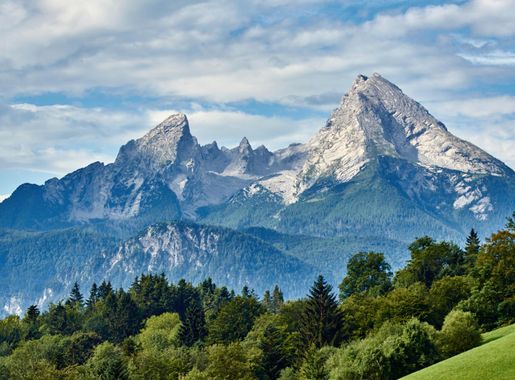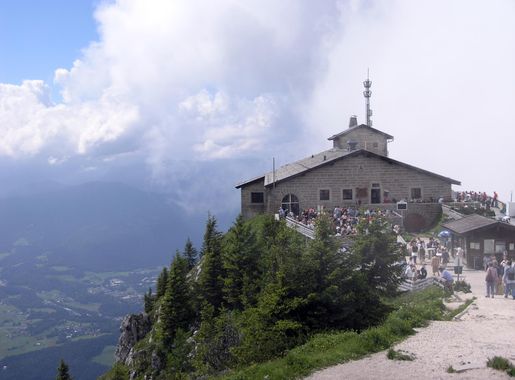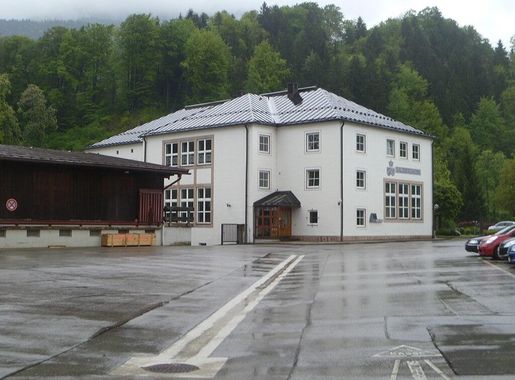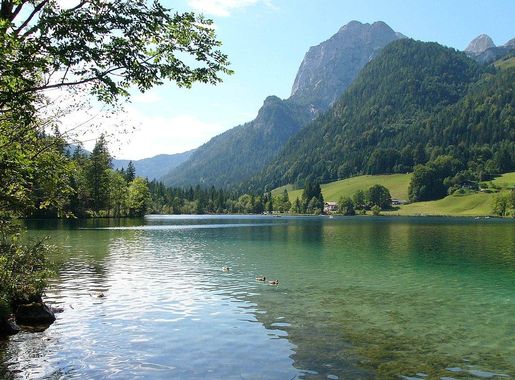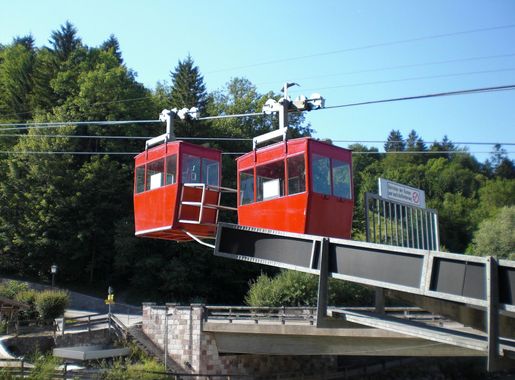
Berchtesgaden National Park: Germany's Alpine Gem
Discover Berchtesgaden National Park: A Bavarian paradise with majestic mountains, serene lakes, and a rich blend of natural beauty and cultural heritage.
Berchtesgaden National Park is a stunning natural reserve located in the Bavarian Alps of Germany. Covering over 208 square kilometers, it is a haven for outdoor enthusiasts and nature lovers. The park is renowned for its breathtaking landscapes, including towering mountains, crystal-clear lakes, and lush forests. One of the park's most famous features is the Königssee, a pristine lake surrounded by steep cliffs and dense woods. Visitors can take boat tours across the lake to the picturesque St. Bartholomew's Church, a historic pilgrimage site. For hikers, the park offers numerous trails ranging from easy walks to challenging mountain climbs, including the trek to the summit of Watzmann, Germany's third highest peak. Wildlife is abundant in Berchtesgaden National Park, with chances to spot golden eagles, ibex, and marmots. The park also has a rich cultural heritage, with traditional Alpine farms and charming villages dotting the landscape. The nearby town of Berchtesgaden provides a perfect base for exploring the park, offering a mix of cozy accommodations, local cuisine, and cultural experiences.
Local tips in Berchtesgaden National Park
- Visit in early summer or autumn to avoid crowds and enjoy mild weather.
- Wear sturdy hiking boots and bring plenty of water for longer trails.
- Take a boat tour on Königssee for the best views of the lake and surrounding mountains.
- Check the park's visitor center for information on guided tours and ranger-led activities.
- Try local Bavarian dishes like schnitzel and pretzels in the town of Berchtesgaden.
Berchtesgaden National Park: Germany's Alpine Gem
Berchtesgaden National Park is a stunning natural reserve located in the Bavarian Alps of Germany. Covering over 208 square kilometers, it is a haven for outdoor enthusiasts and nature lovers. The park is renowned for its breathtaking landscapes, including towering mountains, crystal-clear lakes, and lush forests. One of the park's most famous features is the Königssee, a pristine lake surrounded by steep cliffs and dense woods. Visitors can take boat tours across the lake to the picturesque St. Bartholomew's Church, a historic pilgrimage site. For hikers, the park offers numerous trails ranging from easy walks to challenging mountain climbs, including the trek to the summit of Watzmann, Germany's third highest peak. Wildlife is abundant in Berchtesgaden National Park, with chances to spot golden eagles, ibex, and marmots. The park also has a rich cultural heritage, with traditional Alpine farms and charming villages dotting the landscape. The nearby town of Berchtesgaden provides a perfect base for exploring the park, offering a mix of cozy accommodations, local cuisine, and cultural experiences.
When is the best time to go to Berchtesgaden National Park?
Iconic landmarks you can’t miss
Nationalpark Berchtesgaden
Explore the breathtaking beauty and diverse wildlife of Nationalpark Berchtesgaden, a must-visit national park in the Bavarian Alps of Germany.
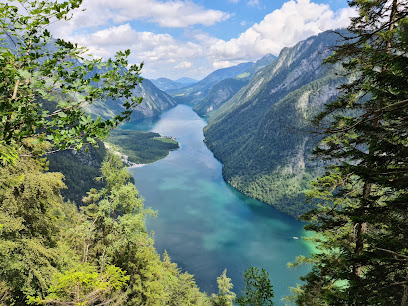
Salt Mine Berchtesgaden
Experience the enchanting underground world of Salt Mine Berchtesgaden, where history, geology, and adventure come together in the Bavarian Alps.
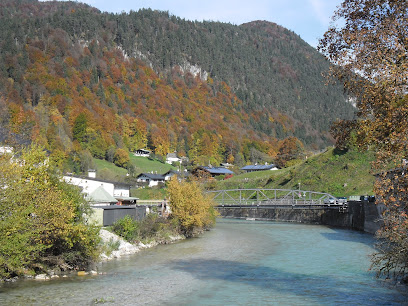
Schloss Berchtesgaden
Discover the enchanting beauty and rich history of Schloss Berchtesgaden, a majestic castle in the heart of the Bavarian Alps.
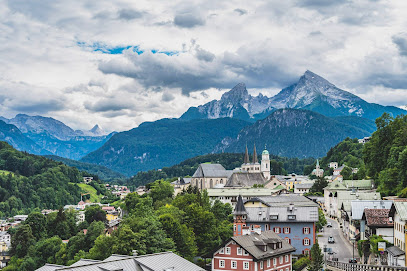
House of Mountains
Explore the stunning House of Mountains in Berchtesgaden, your gateway to the breathtaking beauty of the Alps and the rich biodiversity of the region.
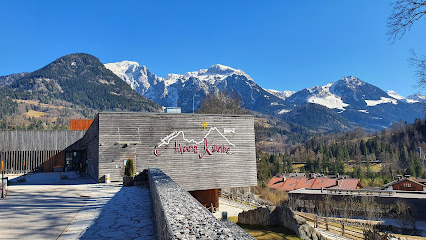
Adlergehege Obersalzberg
Experience the beauty of nature at Adlergehege Obersalzberg, a captivating wildlife park showcasing majestic birds of prey in stunning alpine surroundings.
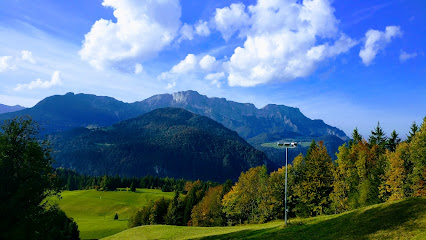
Eiskapelle
Experience the breathtaking beauty of Eiskapelle, a stunning glacier attraction in the Bavarian Alps, perfect for hiking and nature enthusiasts.
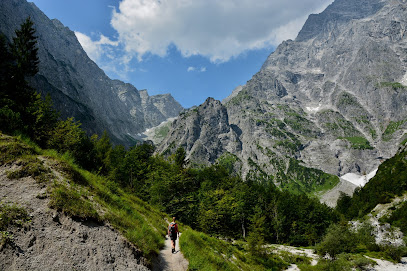
Berchtesgaden National Park Administration Building
Discover the Berchtesgaden National Park Administration Building, where nature meets information in the heart of the Bavarian Alps.
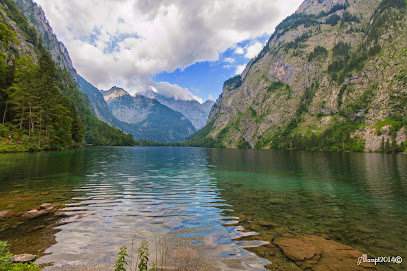
Marktbrunnen
Explore Marktbrunnen, a historical landmark in Berchtesgaden, where beauty meets Bavarian culture in a charming town square.
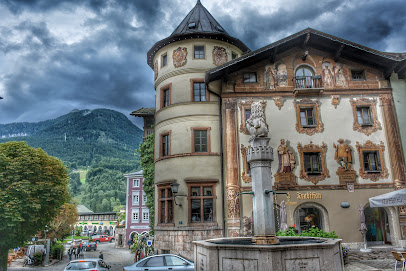
Echowand Königssee
Experience the enchanting echoes and breathtaking beauty of Echowand at Königssee, a top destination for nature lovers and adventurers in Bavaria.
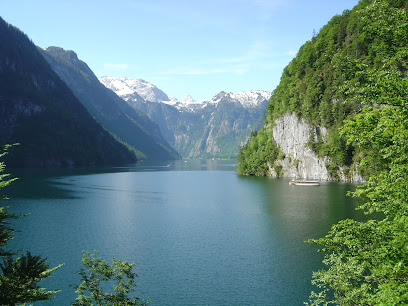
Unmissable attractions to see
Zauberwald
Explore the enchanting Zauberwald in Ramsau bei Berchtesgaden, a breathtaking park filled with lush forests and stunning geological wonders.
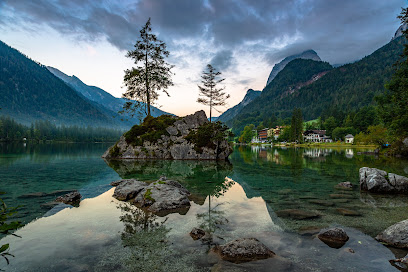
Salzburg Museum
Immerse yourself in the rich history and culture of Salzburg at the Salzburg Museum, where the past meets the present in captivating exhibitions.
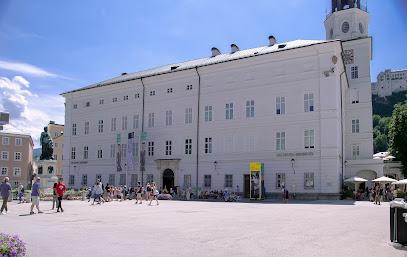
Camping Seespitz
Discover the beauty of nature at Camping Seespitz, the perfect retreat by the tranquil Walchsee in Austria, ideal for relaxation and adventure.
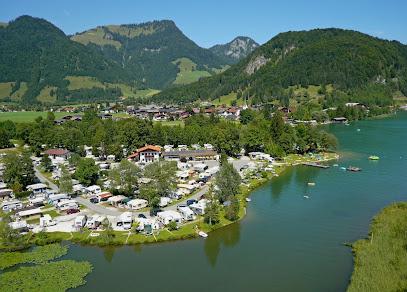
Ferienpark Terrassencamping Süd-See
Discover the serene beauty of Ferienpark Terrassencamping Süd-See, a perfect blend of relaxation, adventure, and stunning Alpine scenery.
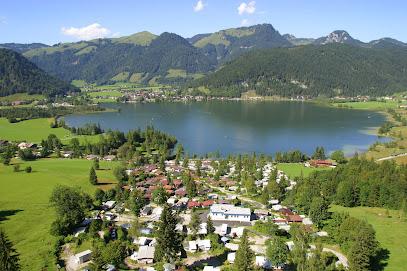
Sporer Likör- & Punschmanufaktur
Experience the rich flavors of Austria at Sporer Likör- & Punschmanufaktur, Salzburg's premier destination for handcrafted liqueurs and punch.
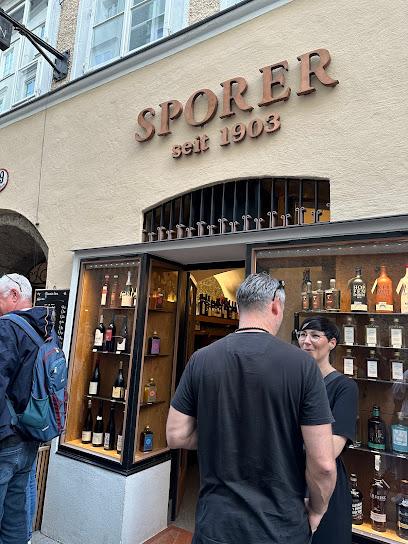
Ramsauer Malerweg
Explore the Ramsauer Malerweg, a stunning hiking trail in Ramsau bei Berchtesgaden, where breathtaking landscapes and artistic inspiration await.
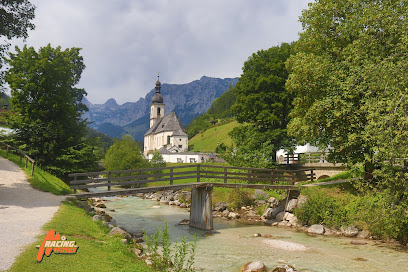
Badestrand Walchsee Ostufer
Discover the tranquil beauty of Badestrand Walchsee, a stunning swimming lake surrounded by the majestic Tyrolean Alps.
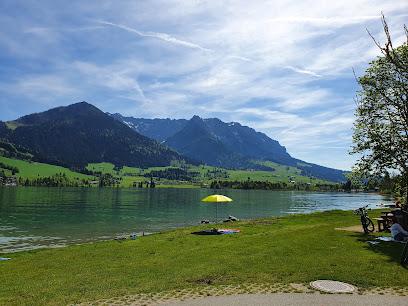
Jenner Aussichtsplattform
Experience stunning panoramic views at Jenner Aussichtsplattform, a must-visit observation deck in Schönau am Königssee, Bavaria, Germany.
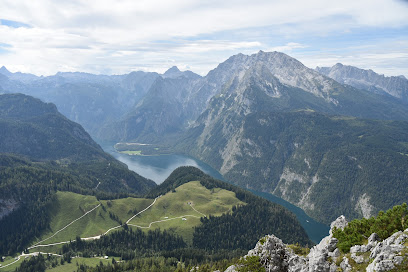
Promenade Walchsee Badestelle
Experience the beauty of Promenade Walchsee, a stunning beach in the Austrian Alps offering relaxation, water sports, and breathtaking views.
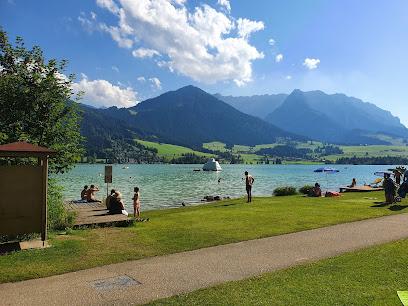
Romy Schneider exhibition
Explore the captivating legacy of Romy Schneider at this unique exhibition nestled in the breathtaking scenery of Schönau am Königssee.
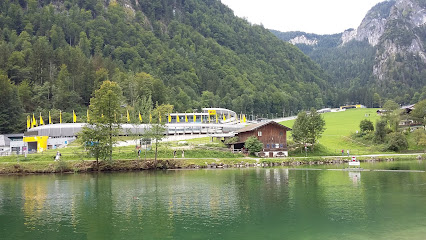
Obersee und Röthbachfall
Experience the breathtaking beauty of Obersee and Röthbachfall, a natural gem in Berchtesgaden National Park, perfect for nature lovers and adventurers.
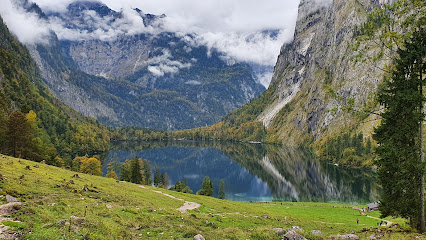
Märchenpfad Bischofswiesen
Experience the magic of storytelling on the Märchenpfad Bischofswiesen, a family-friendly hiking trail surrounded by breathtaking natural beauty.
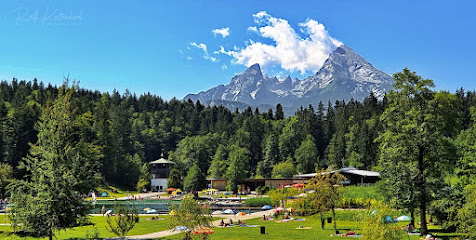
König
Discover the breathtaking beauty of König, a serene lake surrounded by majestic mountains, perfect for adventurers and nature lovers alike.
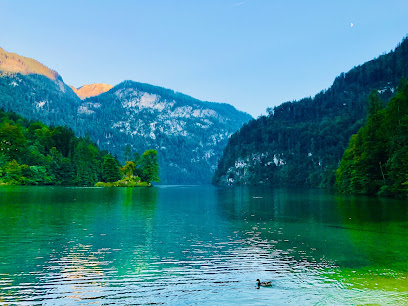
Walchsee
Experience the breathtaking beauty of Walchsee, a serene alpine lake in Tyrol, Austria, perfect for outdoor activities and relaxation.
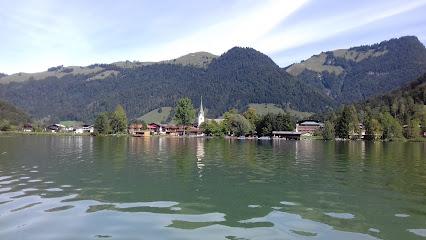
Schärtenspitze
Discover the breathtaking beauty of Schärtenspitze, a premier hiking destination in the Bavarian Alps, perfect for nature lovers and adventure seekers.
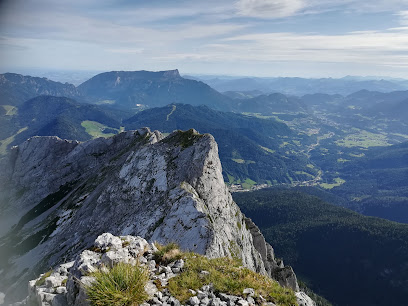
Essential places to dine
Gasthof Neuhaus
Discover authentic Bavarian cuisine at Gasthof Neuhaus in Berchtesgaden - where tradition meets taste in a charming setting.
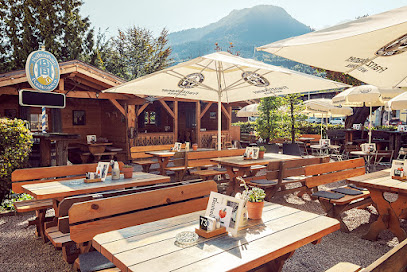
Goldener Bär
Savor traditional Bavarian flavors at Goldener Bär in Berchtesgaden – where local ingredients meet authentic recipes.
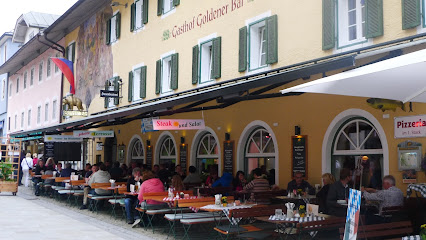
Bräustüberl
Discover authentic Bavarian cuisine at Bräüstüberl in Berchtesgaden - where tradition meets taste amidst stunning alpine scenery.

Akropolis Berchtesgaden
Experience the best of Greek cuisine in Berchtesgaden at Akropolis – where every meal is a celebration of flavor and hospitality.
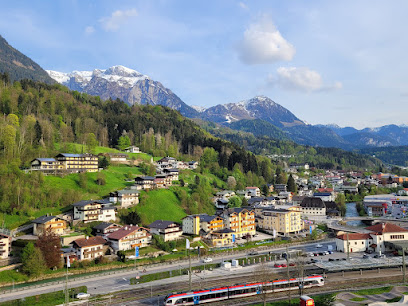
L´Osteria al Parco
Experience authentic Italian cuisine at L'Osteria al Parco in Berchtesgaden, where every meal is a celebration of flavor amidst stunning alpine views.
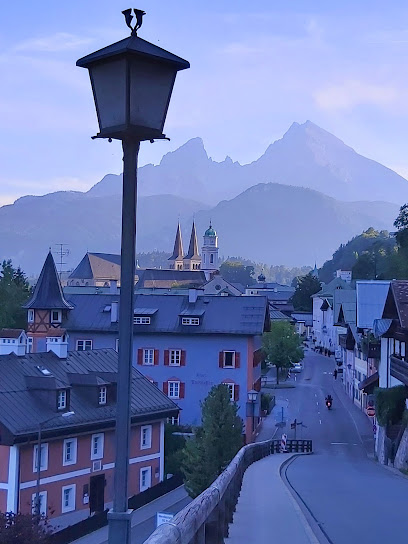
Gasthaus Laroswacht
Experience traditional German cuisine amidst stunning mountain vistas at Gasthaus Laroswacht in Berchtesgaden.
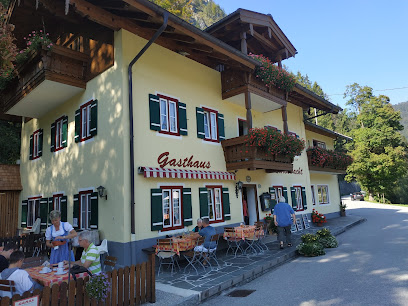
Gasthaus Sonneck
Discover the flavors of Bavaria at Gasthaus Sonneck - A cozy restaurant in Berchtesgaden offering traditional dishes with stunning mountain views.
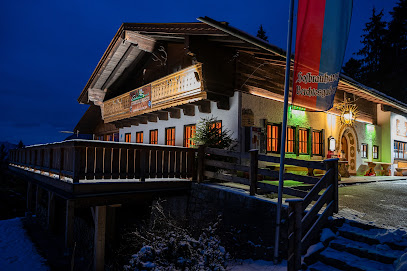
Bauchgfui
Discover Bauchgfui in Berchtesgaden – where fresh ingredients meet innovative culinary artistry in an inviting atmosphere.
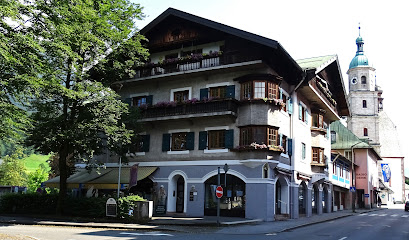
Gasthaus Watzmann
Discover authentic Bavarian flavors at Gasthaus Watzmann in Berchtesgaden - a delightful dining experience awaits you.
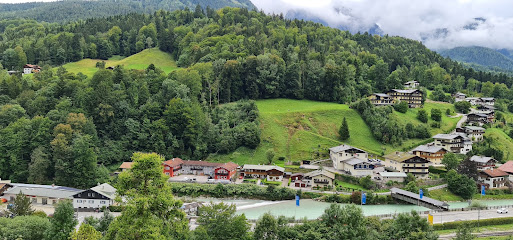
Ristorante Da Branka
Experience authentic Italian cuisine at Ristorante Da Branka in Berchtesgaden – where every dish tells a story.
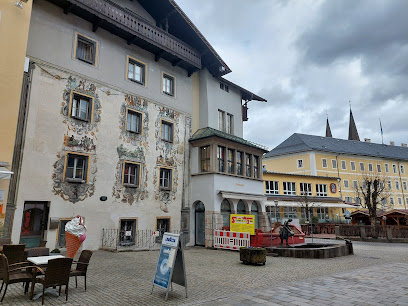
Sophie's Café
Experience authentic Bavarian cuisine at Sophie's Café in Berchtesgaden - where every dish tells a story!
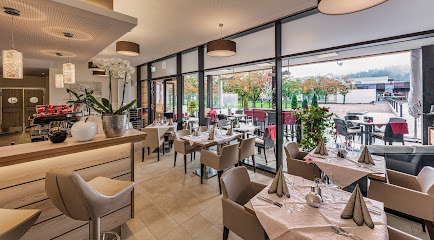
Restaurant Allweglehen
Experience authentic Bavarian flavors at Restaurant Allweglehen in Berchtesgaden – where every meal is a celebration of local cuisine.
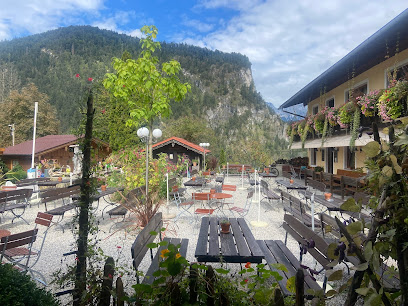
Scharitzkehlalm
Discover Scharitzkehlalm: A must-visit restaurant in Berchtesgaden offering delicious local cuisine amidst stunning alpine views.
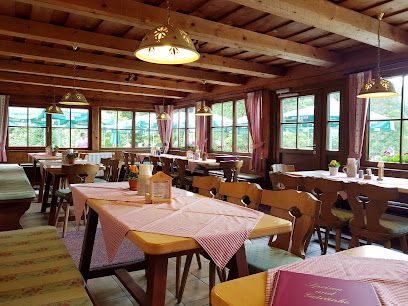
Spiesberger's Alpenküche
Experience authentic Alpine cuisine at Spiesberger's Alpenküche in Berchtesgaden—where tradition meets taste in every dish.
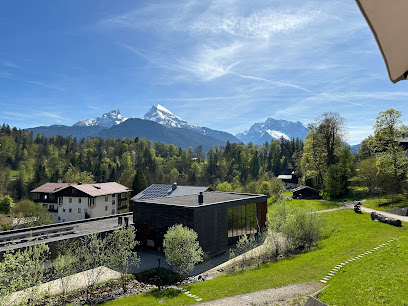
Lederstub‘n
Discover authentic German cuisine at Lederstub’n in Berchtesgaden – where tradition meets flavor in a cozy alpine setting.

Markets, malls and hidden boutiques
Sport Renoth Berchtesgaden
Explore the great outdoors of Berchtesgaden with top-notch gear from Sport Renoth, offering ski rentals and outdoor apparel for all adventures.
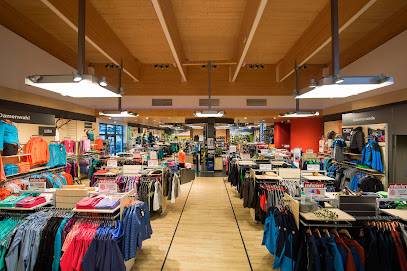
PENNY
Discover affordable shopping at PENNY in Berchtesgaden, your go-to discount supermarket for local groceries and essentials.
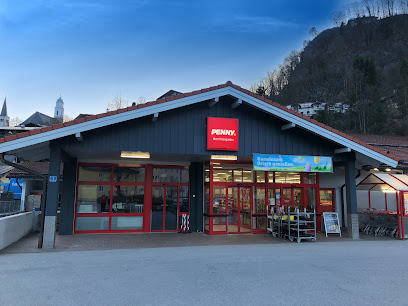
Grassl Genusstreffpunkt am Schlossplatz
Experience the rich flavors of Berchtesgaden at Grassl Genusstreffpunkt, your ultimate destination for exquisite wines and local charm.
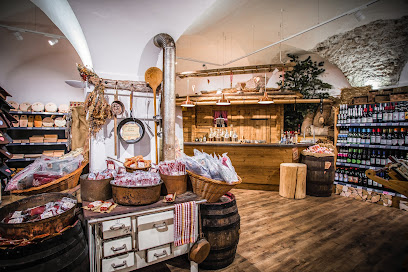
Franz Stangassinger
Discover authentic Bavarian leather craftsmanship at Franz Stangassinger in Berchtesgaden, offering exquisite lederhosen and unique accessories.
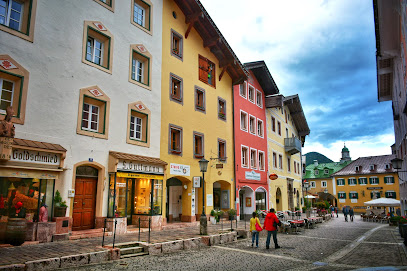
Lederhosen Aigner
Explore authentic Bavarian fashion at Lederhosen Aigner, where tradition meets craftsmanship in the heart of Berchtesgaden.
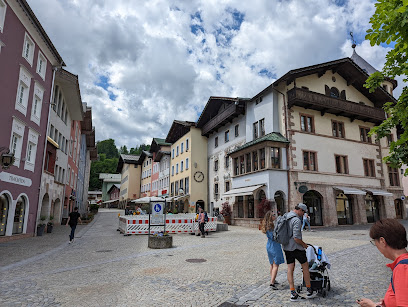
Angerer - Das Schuhhaus
Discover the ultimate shoe shopping experience at Angerer - Das Schuhhaus in Berchtesgaden, offering quality footwear and stylish accessories for every occasion.

Goettgen, Schmuck • Uhren • Trauringe
Explore Goettgen Jewelry & Gift Shop in Berchtesgaden for exquisite handmade jewelry, wedding rings, and unique gifts reflecting local craftsmanship.
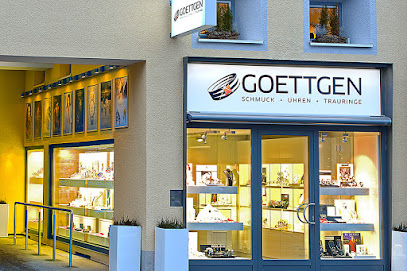
Müller
Explore Müller in Berchtesgaden for a diverse shopping experience, from beauty products to toys, all in one convenient location.
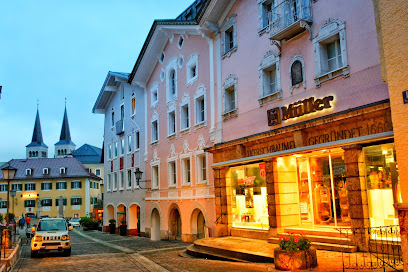
Jack Wolfskin Store
Jack Wolfskin Store in Berchtesgaden: Your ultimate destination for high-performance outdoor clothing and gear in the heart of the Bavarian Alps.

Brunnhaus Holzspielzeug und mehr
Explore Brunnhaus Holzspielzeug und mehr, a magical toy store in Bischofswiesen offering handcrafted wooden toys that inspire creativity and joy.
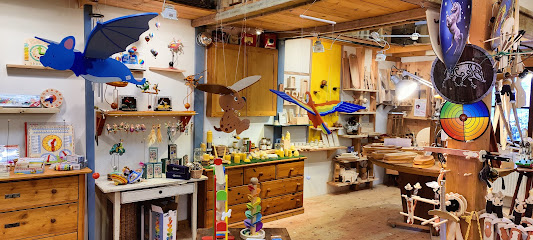
Demetrius Faes e.K.
Experience the local flavors of Berchtesgaden at Demetrius Faes e.K., your go-to grocery store and deli for gourmet delights.
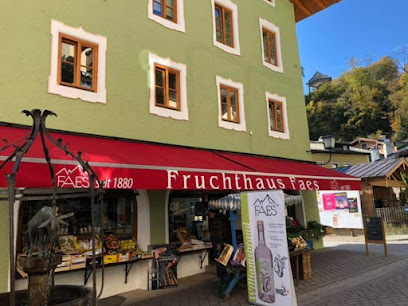
Modehaus Unterländer e. K.
Discover the chicest clothing in Berchtesgaden at Modehaus Unterländer, where style meets exceptional service in a picturesque setting.
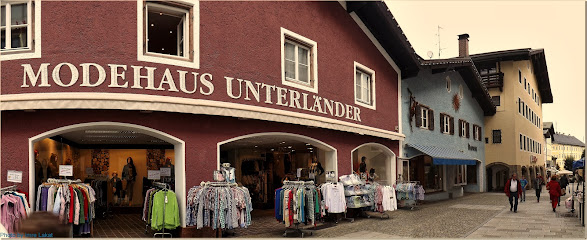
Seiberl
Discover unique local fashion and quality craftsmanship at Seiberl in Berchtesgaden, a must-visit clothing store for tourists.
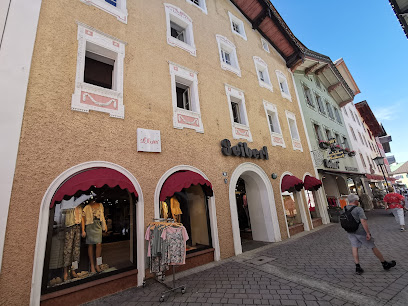
EURONICS Denk
Explore EURONICS Denk in Berchtesgaden for all your electronic needs, from household appliances to cutting-edge gadgets in a stunning alpine backdrop.

Berchtesgadener Handwerkskunst
Explore Berchtesgadener Handwerkskunst, a needlework haven in Berchtesgaden, and discover the beauty of traditional craftsmanship.
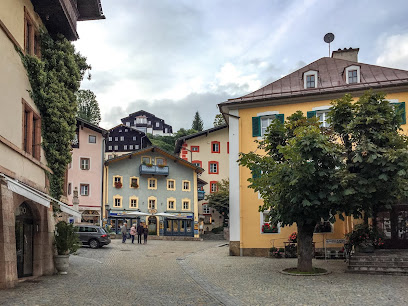
Essential bars & hidden hideouts
Gasthof Neuhaus
Savor the flavors of Bavaria at Gasthof Neuhaus, a top-rated culinary gem in Berchtesgaden offering traditional dishes and a cozy atmosphere.
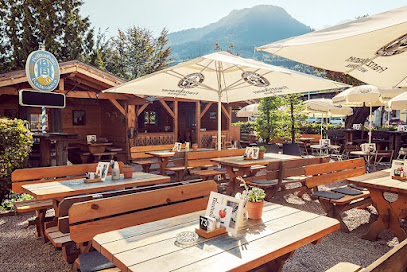
Goldener Bär
Experience authentic Bavarian cuisine at Goldener Bär in Berchtesgaden, where traditional dishes meet warm hospitality.
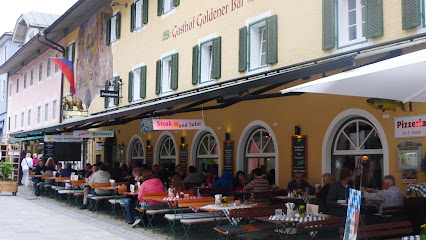
Gasthof Oberwirt -Ramsau
Discover authentic Bavarian cuisine and warm hospitality at Gasthof Oberwirt in Ramsau, surrounded by stunning alpine landscapes.
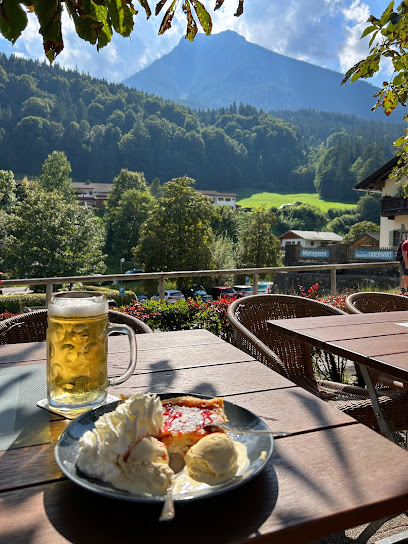
Wirtshaus Hocheck
Discover the heart of Bavarian culture at Wirtshaus Hocheck, a perfect blend of dining and hospitality in the stunning Ramsau bei Berchtesgaden.
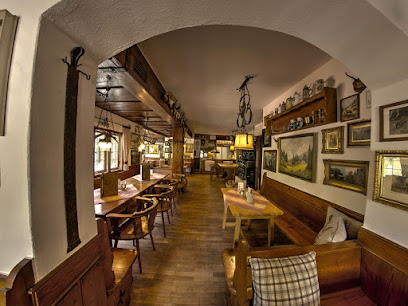
Berggaststätte Wimbachschloss
Discover Berggaststätte Wimbachschloss, a mountain restaurant in Bavaria offering delicious local cuisine and breathtaking views in Ramsau bei Berchtesgaden.

KS Alps Bowling GmbH
Enjoy a unique blend of bowling and dining at KS Alps Bowling GmbH in Berchtesgaden, where fun meets flavor in the heart of the Bavarian Alps.
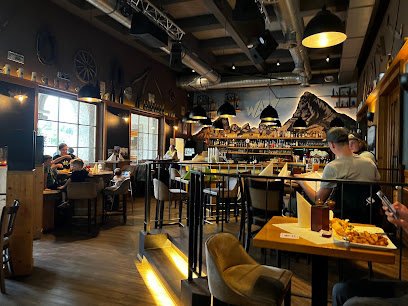
Lederstub‘n
Experience authentic German cuisine in a cozy atmosphere at Lederstub‘n, the perfect dining spot in Berchtesgaden for travelers and locals alike.
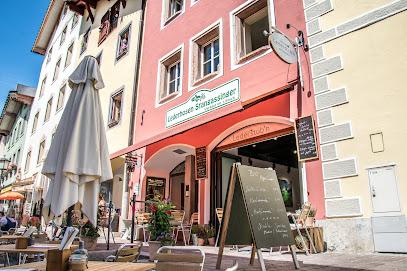
Soundcafe
Discover the vibrant atmosphere of Soundcafe, a perfect blend of bar and coffee shop nestled in picturesque Berchtesgaden, Germany.
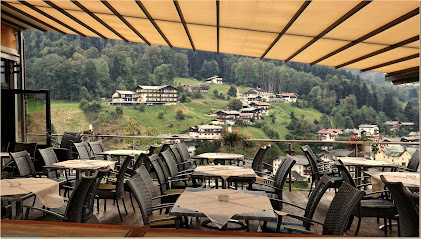
Biergarten am Königssee
Experience the charm of Bavaria at Biergarten am Königssee, where refreshing brews and delicious cuisine meet stunning alpine views.
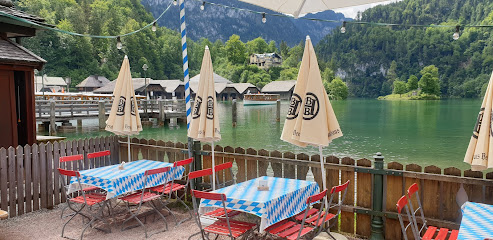
Charivari Berchtesgaden
Experience the heart of Bavarian hospitality at Charivari Berchtesgaden, where delectable dishes meet a vibrant atmosphere in the stunning Alps.

Gletscherquellenhütte - Texas Biergarten
Discover the charm of Gletscherquellenhütte, a Bavarian restaurant and beer garden nestled in the stunning Alps, serving traditional cuisine and local brews.
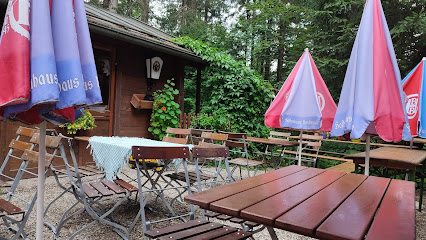
Pension FeWo Bar Gästezimmer Etzerschlössl
Discover the tranquility of Bavarian hospitality at Pension FeWo Bar Gästezimmer Etzerschlössl, your perfect retreat in Berchtesgaden's stunning landscapes.
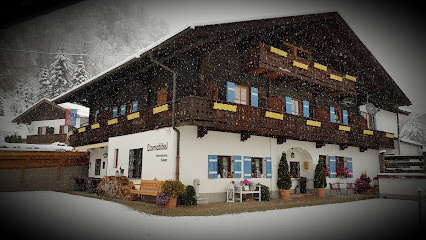
Zum Kleinen Kuckuck
Discover Bavarian charm at Zum Kleinen Kuckuck, a top-rated gastropub in Berchtesgaden, offering delicious local cuisine and a cozy atmosphere.
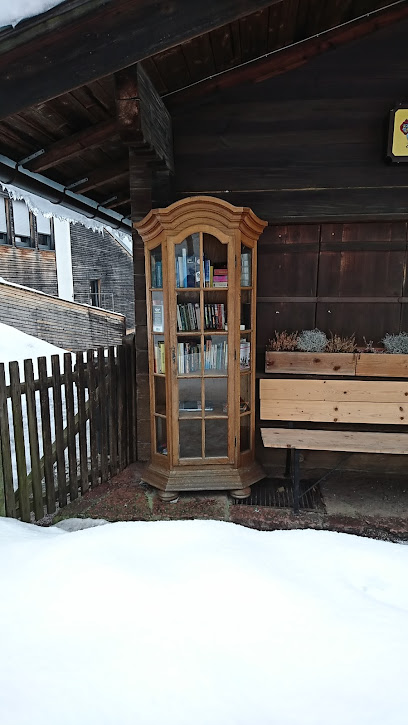
Ratsstubn
Discover the authentic Bavarian experience at Ratsstubn, a cozy pub in Berchtesgaden with a delightful beer garden.

Einkehr mit Getränke
Experience the perfect blend of local charm and breathtaking views at Einkehr mit Getränke in Schönau am Königssee, Germany.
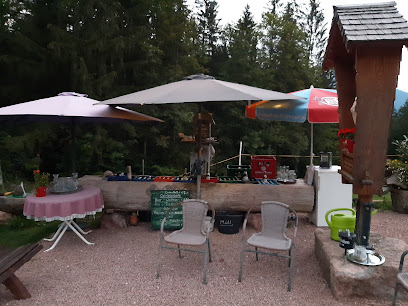
Local Phrases about Berchtesgaden National Park
-
- HelloServus
[Zer-voos] - GoodbyePfiat di
[Fee-aht dee] - YesJa
[Ya] - NoNein
[N-eye-n] - Please/You're welcomeBitte
[Bee-tuh] - Thank youDanke
[Dahn-kuh] - Excuse me/SorryEntschuldigung
[Ent-shool-dee-gung] - How are you?Wie geht's?
[Vee gates] - Fine. And you?Gut. Und dir?
[Goot. Oond deer?] - Do you speak English?Sprechen Sie Englisch?
[Shpre-khen zee Eng-lish?] - I don't understandIch verstehe nicht
[Eekh fer-shtay-uh nikht]
- HelloServus
-
- I'd like to see the menu, pleaseIch hätte gerne die Speisekarte, bitte
[Eekh hett-uh gehr-nuh dee Shpy-suh-kahr-tuh, bee-tuh] - I don't eat meatIch esse kein Fleisch
[Eekh ess-uh kine Fly-sh] - Cheers!Prost!
[Prohst] - I would like to pay, pleaseIch möchte bitte zahlen
[Eekh muhkh-tuh bee-tuh tsah-len]
- I'd like to see the menu, pleaseIch hätte gerne die Speisekarte, bitte
-
- Help!Hilfe!
[Hil-feh] - Go away!Geh weg!
[Geh vehg] - Call the Police!Rufen Sie die Polizei!
[Roo-fen zee dee Poh-lee-ts-eye] - Call a doctor!Rufen Sie einen Arzt!
[Roo-fen zee eye-nen Ahrts] - I'm lostIch habe mich verirrt
[Eekh hahb-uh meekh fair-irt] - I'm illIch bin krank
[Eekh been kr-ank]
- Help!Hilfe!
-
- I'd like to buy...Ich möchte kaufen...
[Eekh muhkh-tuh kow-fen] - I'm just lookingIch schaue nur
[Eekh sh-ow-uh noor] - How much is it?Wie viel kostet es?
[Vee feel koh-stet es] - That's too expensiveDas ist zu teuer
[Dahs ist tsoo toy-er] - Can you lower the price?Können Sie den Preis senken?
[K-ern-en zee den prees zank-en]
- I'd like to buy...Ich möchte kaufen...
-
- What time is it?Wie spät ist es?
[Vee shp-ate ist es] - It's one o'clockEs ist ein Uhr
[Es ist iyn oor] - Half past (10)Halb elf
[Halb elf] - MorningMorgen
[M-ohr-gen] - AfternoonNachmittag
[Nahkh-meet-tahg] - EveningAbend
[Ah-bend] - YesterdayGestern
[Ges-tern] - TodayHeute
[Hoy-tuh] - TomorrowMorgen
[M-ohr-gen] - 1Eins
[I-ns] - 2Zwei
[Tsv-eye] - 3Drei
[Dr-eye] - 4Vier
[Feer] - 5Fünf
[F-oonf] - 6Sechs
[Zeks] - 7Sieben
[Zee-ben] - 8Acht
[Ahkht] - 9Neun
[Noy-n] - 10Zehn
[Tsayn]
- What time is it?Wie spät ist es?
-
- Where's a/the...?Wo ist ein/der...?
[Vo ist iyn/dehr] - What's the address?Was ist die Adresse?
[Vahs ist dee Ah-dress-uh] - Can you show me (on the map)?Können Sie mir das zeigen (auf der Karte)?
[K-ern-en zee meer das tsee-g-ehn (owf dehr kahr-tuh)] - When's the next (bus)?Wann fährt der nächste (Bus)?
[Vahn f-ehrt dehr nekh-stuh (Boos)] - A ticket (to ....)Eine Fahrkarte (nach ....)
[Iyn-uh f-ahr-kart-uh (nahkh)]
- Where's a/the...?Wo ist ein/der...?
History of Berchtesgaden National Park
-
Berchtesgaden National Park's history dates back to ancient times, with the earliest known inhabitants being the Celts. Archeological findings suggest that the Celts were present in the region as early as the Iron Age. Later, during the Roman Empire's expansion into Germanic territories, the area came under Roman influence, leaving behind traces of Roman roads and settlements.
-
In the 12th century, the Augustine Canons established the Berchtesgaden Provostry, which played a significant role in the region's development. This period saw the construction of notable structures like the Berchtesgaden Abbey. The monks engaged in mining activities, extracting salt and other valuable minerals, which contributed to the area's economic growth.
-
By the 14th century, Berchtesgaden had evolved into a Prince-Provostry, a small ecclesiastical principality within the Holy Roman Empire. The Prince-Provosts wielded both secular and religious power, overseeing the region's governance for several centuries. The town of Berchtesgaden served as the administrative center, and the salt trade continued to flourish.
-
The early 19th century brought significant changes to Berchtesgaden due to the Napoleonic Wars. In 1803, the secularization movement dissolved the ecclesiastical principalities, and Berchtesgaden became part of the Kingdom of Bavaria. This transition marked the end of the monastic influence and ushered in a new era of Bavarian administration.
-
During the Nazi era, Berchtesgaden gained notoriety as the site of Adolf Hitler's mountain retreat, known as the Eagle's Nest (Kehlsteinhaus). Perched atop the Kehlstein Mountain, it served as a symbol of Nazi power and a meeting place for high-ranking officials. The area around Obersalzberg was heavily fortified, and many structures from this period still exist, providing a stark reminder of this dark chapter.
-
Founded in 1978, Berchtesgaden National Park was established to preserve the region's unique alpine ecosystems and scenic landscapes. The park spans over 210 square kilometers and is Germany's only alpine national park. It is home to a diverse range of flora and fauna, including rare species such as the golden eagle and the alpine ibex. The park's establishment marked a commitment to conservation and sustainable tourism.
-
Berchtesgaden boasts a rich cultural heritage, with traditions deeply rooted in Bavarian customs. The region is known for its folk music, traditional costumes (Trachten), and annual events such as the Almabtrieb, where cattle are adorned with flowers and paraded down from the alpine pastures. The local craftsmanship, particularly woodcarving and salt production, continues to thrive, reflecting the area's historical economic activities.
Berchtesgaden National Park Essentials
-
Berchtesgaden National Park is located in the southeastern corner of Germany, near the border with Austria. The nearest major city is Salzburg, Austria, which is about 30 kilometers away. You can fly into Salzburg Airport and then take a train or bus to Berchtesgaden. Alternatively, you can fly into Munich Airport, which is about 150 kilometers away, and then take a train or bus. The train journey from Munich to Berchtesgaden typically takes about 2.5 to 3 hours.
-
Within Berchtesgaden National Park, the best way to get around is by foot, bike, or local buses. The regional bus network is well-developed and connects many of the park's key attractions, including Lake Königssee, the Jennerbahn cable car, and the Eagle's Nest. For those looking to explore more remote areas, renting a car can be a convenient option. However, parking can be limited in popular spots, especially during peak tourist season.
-
The official currency in Germany is the Euro (EUR). Credit and debit cards are widely accepted in hotels, restaurants, and larger shops, but it is advisable to carry some cash for smaller establishments and remote areas. ATMs are available in Berchtesgaden town and other major tourist spots within the park. It is also recommended to inform your bank of your travel plans to avoid any issues with card transactions.
-
Berchtesgaden National Park is generally a very safe destination for tourists. There are no specific high-crime areas targeting tourists. However, visitors should always take standard precautions, such as keeping an eye on their belongings in crowded places and avoiding isolated areas at night. It's also important to be prepared for outdoor activities by wearing appropriate gear and staying on marked trails.
-
In case of emergencies, dial 112 for immediate assistance. This number connects you to fire, medical, and police services. The nearest hospitals and medical facilities are located in Berchtesgaden and the surrounding towns. It is advisable to have travel insurance that covers medical emergencies. For minor health issues, pharmacies can be found in Berchtesgaden town.
-
Fashion: Do dress in comfortable, weather-appropriate clothing, especially when hiking. Avoid wearing overly revealing clothing in town areas. Religion: Do respect local customs and traditions, especially when visiting religious sites. Public Transport: Do validate your ticket before boarding and be courteous to fellow passengers. Don't eat or drink on public transport. Greetings: Do greet people with a friendly 'Guten Tag' (Good day) or 'Grüß Gott' (God bless) in Bavarian dialect. A handshake is common when meeting someone. Eating & Drinking: Do try local Bavarian delicacies and beers. Don't forget to say 'Prost' (Cheers) before taking a sip.
-
To experience Berchtesgaden National Park like a local, consider visiting during the shoulder seasons of spring and autumn when the weather is pleasant, and the park is less crowded. Engage with local guides for insightful tours of the park's history and natural beauty. Don't miss a boat trip on Lake Königssee to see the iconic St. Bartholomew's Church. For a unique experience, try a traditional Bavarian meal at one of the local inns and enjoy a live folk music performance.
Nearby Cities to Berchtesgaden National Park
-
Things To Do in Salzburg
-
Things To Do in Kitzbühel
-
Things To Do in Bad Gastein
-
Things To Do in Hallstatt
-
Things To Do in Innsbruck
-
Things To Do in Munich
-
Things To Do in Linz
-
Things To Do in Kranjska Gora
-
Things To Do in Klagenfurt
-
Things To Do in Bled
-
Things To Do in Bohinj
-
Things To Do in Český Krumlov
-
Things To Do in Nova Gorica
-
Things To Do in Škofja Loka
-
Things To Do in Kamnik



